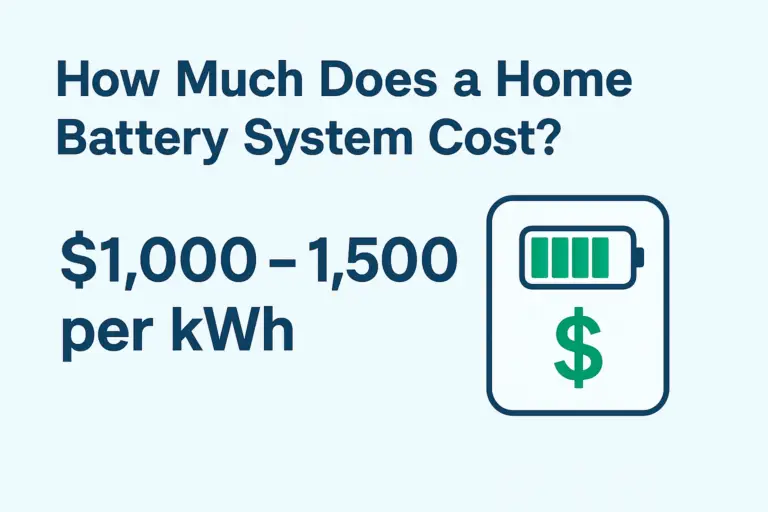
Due to economies of scale, most home battery systems—particularly those using the leading lithium iron phosphate (LFP) chemistry—have generally reached a similar price point across all major brands.
Lower-cost, niche, or DIY batteries exist but often lack certifications and long-term support.
Installers need to stand behind solutions for 15–20 years to match the standard warranties offered on solar panels, making certified, commercial-grade battery systems the preferred and trusted choice.
Choosing a vetted solution ensures reliability, safety, and ongoing service
💰 How Much Does a Battery System Really Cost?
💰 How Much Does a Battery System Really Cost?
The cost of a home battery system typically ranges from $1,000 to $1,500 per kilowatt-hour (kWh). This estimate encompasses equipment, installation, and permitting. For instance, a 15 kWh system would cost between $15,000 and $22,500 after incentives.
Federal and State incentives like the 30% Residential Clean Energy Credit can significantly reduce costs. Take advantage of them before they are gone!
Great article to read on costs: https://www.cnet.com/home/energy-and-utilities/how-much-does-a-home-battery-cost/
🔋 Home Battery vs. Fuel Generator: A Cost Comparison
While fuel generators may have lower upfront costs, they entail ongoing expenses such as:
Fuel Costs: Regular refueling, especially during extended outages.
Maintenance: Routine servicing to ensure reliability.
Installation: Costs associated with fuel tank setup, fuel fill-up, and compliance with local codes.
In contrast, home battery systems offer:
Low Operating Costs: Minimal maintenance and no fuel requirements.
Quiet Operation: No noise pollution.
Clean Energy: Zero emissions during operation.
Seamless Integration: Can be paired with solar panels for enhanced efficiency
- Bullet Proof Warranties that range 10-15 years
Over time, the total cost of ownership for battery systems is often lower than that of traditional generators, especially when factoring in fuel and maintenance expenses.
⚙️ Additional Features Impacting Cost
Load Shedding Capabilities
Load shedding refers to the ability of a system to prioritize and manage energy distribution to essential appliances during power outages. Implementing this feature may require additional components like sub-panels, potentially adding $1,000 to $2,000 to the total cost .
Solar and Time-of-Use (TOU) Integration
Integrating your battery system with solar panels allows for energy storage during peak production times, enhancing self-sufficiency. Additionally, TOU integration enables the system to optimize energy usage based on utility rate schedules. These integrations can increase upfront costs but offer long-term savings and efficiency.
📊 Real-World Example
Consider a homeowner installing a 15 kWh battery system: $1k X 15kw=
Base Cost: $15,000 to $22,500 (incuding Tax Credit):
Additional Features:
Load Shedding: +$1,000 to $2,000.
Solar Integration: Varies based on system size and complexity.
Over time, this investment can lead to significant savings on energy bills, increased energy independence, and a reduced carbon footprint.
